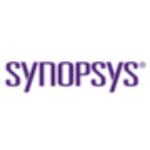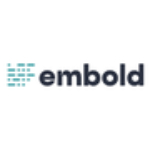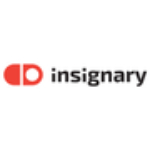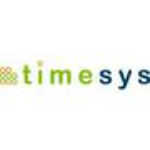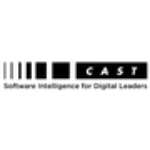TechnologyCounter provides genuine, unbiased real user reviews to help buyers make informed decisions. We may earn a referral fee when you purchase through our links, at no extra cost to you.
List of Best Software Composition Analysis Tools
Showing 1 - 11 of 11 productsBlack Duck is a software solution designed to help businesses manage their open source software. With its advanced features and user-friendly interface, Black Duck streamlines the process of identifying, tracking, and securing open source components...Read Black Duck Reviews
Debricked is a software solution that helps companies maintain the security and integrity of their open source components. With its advanced analysis and monitoring capabilities, Debricked helps organizations identify and fix vulnerabilities, mitigat...Read Debricked Reviews
Embold, an innovative software designed to revolutionize the way you approach coding and software development. With its advanced features and user-friendly interface, Embold streamlines the coding process and enhances the overall quality of your soft...Read Embold Reviews
Insignary Clarity is a software that provides unparalleled security for your digital assets. With its advanced technology, Insignary Clarity ensures the protection of your data and applications from cyber threats. Empower your business with the ultim...Read Insignary Clarity Reviews
Phylum, an innovative software solution, is revolutionizing the way businesses manage their data. Designed to streamline processes and enhance efficiency, Phylum offers a user-friendly platform for organizing, analyzing, and sharing information. With...Read Phylum Reviews
Revenera SCA is a solution for managing open source software components and ensuring compliance. With its advanced technology and robust features, Revenera SCA simplifies the complex process of open source license compliance, helping businesses save...Read Revenera SCA Reviews
SCANOSS is a software designed to simplify and streamline the process of managing open source software components in your projects. With its user-friendly interface features, SCANOSS allows you to efficiently track and monitor your open source depend...Read SCANOSS Reviews
SeaLights is a software that takes software testing and monitoring to the next level. With SeaLights, teams can easily track code quality and performance in real-time, ensuring smooth is a delivery of high-quality products. Say goodbye to traditional...Read SeaLights Reviews
SOOS is a software designed to revolutionize how businesses function. With its seamless integration, intuitive interface, features, SOOS is the solution to streamline operations, increase efficiency, and boost productivity. Say goodbye to complex sys...Read SOOS Reviews
Timesys Vigiles is a software solution designed to keep your devices safe and secure. With advanced features and continuous monitoring, Vigiles ensures protection against potential threats, allowing you to focus on your business with confidence. Stay...Read Timesys Vigiles Reviews
Cast Highlight, the new software taking the market by storm. With its innovative features and user-friendly interface, Cast Highlight is revolutionizing the way businesses manage their software applications. Designed to help optimize performance and...Read Cast Highlight Reviews
- What Is Software Composition Analysis Tools?
- Top Reasons Why Businesses Need Software Composition Analysis Tools?
- What Are the Top Key Features of Software Composition Analysis Tools?
- What Are the Top Benefits of Software Composition Analysis Tools?
- What Are the Steps to Choosing the Right Software Composition Analysis Tools?
- What Are the Types of Software Composition Analysis Tools for Different Industries?
- What Are the Technology Trends for Best Software Composition Analysis Tools?
- What Are the Deployment Options for Software Composition Analysis Tools?
What Is Software Composition Analysis Tools?
Software Composition Analysis (SCA) tools are utilized to identify and evaluate third-party components that are employed in the construction of a software product. The aforementioned components have the potential to be classified as open source, proprietary, or a combination of both.
The best software composition analysis tools provide the capability to identify the existence of susceptible components within a program that may be exploited by an adversary to accomplish malevolent objectives. Top software composition analysis tools enable enterprises to effectively and precisely identify all the constituent elements incorporated into their software package, regardless of temporal or geographical constraints.
Software Composition Analysis (SCA) technologies facilitate the development of tailored policies that enable businesses to identify problematic components, including obsolete versions, license-related concerns, and well-known security risks. These technologies can additionally assist firms in guaranteeing compliant software releases by doing scans for issues connected to compliance, such as license compliance.
Software composition analysis SCA tools can be employed by organizations to ascertain the precise version of every component utilized in their software application during both the development and production stages. Consequently, this enables companies to guarantee the utilization of the most up-to-date versions of components that comply with security protocols and license agreements.
Top Reasons Why Businesses Need Software Composition Analysis Tools?
- The primary objective of this task is to effectively detect third-party libraries and other components within a given codebase. This process serves to aid in ensuring legal compliance, addressing security concerns, and managing licensing matters.
- To guarantee adherence to the company's security policies and best practices standards, it is imperative to verify the compliance of software components utilized in a project.
- To monitor the versioning of the different components of an application, and ensure the stability and compatibility of the application with forthcoming updates or modifications.
- The primary objective is to identify potential weaknesses inside programs and their dependencies, which have the potential to result in security breaches and unauthorized access to sensitive data.
- To promptly detect and address any obsolete and unsupported code libraries.
- To streamline the procedure of assessing the compatibility of dependencies inside an application and identifying potential conflicts with other components within such an application.
- To assist developers in minimizing the utilization of superfluous components and detecting probable instances of "dead code" inside their applications.
- To identify licenses that are not by the approved policies of the company, and avoid the risk of expensive legal consequences.
- To mitigate the utilization of components that possess known vulnerabilities or exhibit susceptibility to potential future attacks.
- One approach to assessing the efficacy of an application is evaluating the impact of its many components on its overall performance and stability.
- To identify probable instances of copyright infringement, it is necessary to examine the third-party components that have been incorporated into the project.
- To detect any instances of harmful code within the system, such as viruses, worms, and Trojans that may be encoded within an application, a scanning process is employed.
- To mitigate the risk of a system outage, it is important to remain vigilant and monitor the expiration dates of third-party components. Failure to upgrade these components promptly could potentially lead to system failure.
- To facilitate the prompt identification and automated resolution of any defects or problems inside a codebase, it is imperative to empower DevOps teams.
- To aid teams in assuring the optimization of their applications, it is imperative to prioritize the incorporation of just essential components, hence achieving lightweight and efficient designs.
What Are the Top Key Features of Software Composition Analysis Tools?
The top key features of software composition analysis tools include:
1. Dependency Analysis: Software component connectors (SCCs) can identify interdependencies among various components and monitor any modifications made to these dependencies. This process aids in the identification and effective management of potential vulnerabilities and risks.
2. Security Checks: Secure Component Catalogs (SCCs) are responsible for monitoring and managing the diverse licenses linked to individual components, ensuring their compliance with the security regulations established by the organization.
3. Version Tracking: Software Configuration Control (SCC) systems are responsible for maintaining a comprehensive record of various iterations of software components. These systems play a crucial role in promptly identifying potential vulnerabilities and known security concerns associated with the present version of the software.
4. Enforcement of Compliance Policies: Secure Configuration Checkers (SCCs) possess the capability to effectively implement and uphold the prevailing compliance policies inside an organization. This aids in the maintenance of up-to-date system components that adhere to the most recent security requirements.
5. Automated Workflows: Software Configuration Control (SCC) systems offer automated workflows to effectively manage software components and processes, hence facilitating the optimization of the development process.
6. Licensing Management: Software Component Catalogs (SCCs) play a crucial role in the monitoring and administration of licensing information on various components. This serves to guarantee that the organization remains in adherence to pertinent licensing rules.
7. Reporting & Data Tracking: Secure Configuration Checkers (SCCs) offer comprehensive reporting and data monitoring of system components, promptly notifying users of any identified possible vulnerabilities.
8. Auditing: System and Communications Checklists (SCCs) facilitate routine audits of all system components, enabling the identification and ongoing monitoring of potential security risks and vulnerabilities.
What Are the Top Benefits of Software Composition Analysis Tools?
The top benefits of software composition analysis tools are:
1. Improved Security: The best software composition analysis tools can identify potential security vulnerabilities present in open-source code, hence aiding in the enhancement of application security. This mitigates the potential for security vulnerabilities resulting from the presence of unsafe code.
2. Automated Compliance: Software composition analysis (SCA) technologies can automate the compliance process, thereby obviating the necessity of manual code inspection to ensure adherence to regulatory obligations.
3. Dependency Monitoring: Software composition analysis (SCA) tools are utilized to monitor the dependencies of a program, hence facilitating the identification of potential conflicts or issues that may arise when updating libraries.
4. License Management: Software composition analysis SCA tools offer real-time insights on the licensing status of open-source components employed within an application, hence aiding in the adherence to terms of use and compliance requirements.
5. Enhanced Efficiency: The best software composition analysis tools facilitate the identification and elimination of superfluous and redundant code, hence enhancing the effectiveness of the software development process.
6. Improved Quality: Top software composition analysis tools play a crucial role in ensuring the construction of applications with superior open-source components, hence contributing to the attainment of the utmost quality in the final output.
7. Streamlined Maintenance: Software composition analysis tools play a crucial role in ensuring the accuracy and timely distribution of security updates by closely monitoring changes to dependencies inside an application.
What Are the Steps to Choosing the Right Software Composition Analysis Tools?
1. Ascertain the precise criteria for top software composition analysis tools requirements of your firm. When evaluating various aspects, it is important to take into account elements such as financial constraints, technical proficiency, as well as adherence to regulatory and compliance obligations.
2. Investigate the various software composition analysis solutions that are now available in the market. Examine feedback provided by fellow users and engage in discussions with vendors to gain comprehensive insights about the features, advantages, and constraints associated with the available titles.
3. Determine prospective tools and companies capable of offering the requisite functionalities to meet your requirements.
4. To effectively assess and select appropriate software composition analysis tools for our firm, it is imperative to do a comprehensive comparison and evaluation process. This entails thoroughly examining various tools for our organization's specific requirements. When evaluating options, it is important to take into account various elements, including but not limited to price, user-friendliness, and scalability.
5. The optimal solutions should be subjected to rigorous testing and validation procedures. Examine the occurrences of false positives and false negatives to assess the tool's efficacy in identifying security vulnerabilities and hazardous code.
6. When selecting the best software composition analysis tools for a company, it is advisable to consider both testing findings and budgetary constraints to determine the most suitable option.
7. The selected solution should be implemented and made accessible to all users within the organization to address their compliance and security requirements.
What Are the Types of Software Composition Analysis Tools for Different Industries?
Software composition analysis (SCA) tools are widely accessible throughout several sectors, with each tool specifically tailored to cater to the unique requirements of its domain. In general, these tools analyze the source code of software programs and offer insights into their structure and interdependencies. In the realm of corporate software development, the prevailing forms of the best software composition analysis tools encompass static code analysis and dynamic code analysis.
Static code analysis, alternatively referred to as source code analysis or vulnerability scanning, is a technique employed to evaluate the code quality of software programs. The primary objective of software testing is to identify code errors, security vulnerabilities, and suboptimal coding techniques, hence ensuring compliance with established coding standards.
Dynamic code analysis is a technique employed to assess the runtime behavior of software programs during deployment, to identify security vulnerabilities and programming errors. This particular tool demonstrates a high level of attentiveness towards user input and conducts a thorough examination of the severity of vulnerabilities to effectively prioritize security concerns.
Software composition analysis SCA tools in the healthcare business employ a combination of static and dynamic code analysis approaches to identify coding weaknesses. The individuals engaged in the identification of established backdoors, injection vulnerabilities, and buffer overflow occurrences within medical software programs.
In addition, software composition analysis tools ensure that the software adheres to specific privacy standards and meets government requirements, including the Health Insurance Portability and Accountability Act (HIPAA). Top software composition analysis tools are employed in the automotive sector to guarantee safety and quality by assessing code for potential memory safety concerns and buffer overflow issues.
In addition, these technologies ascertain the adherence of software to industry-established benchmarks, such as ISO 26262, which pertains to safety measures in the automobile sector. applications composition analysis techniques are utilized in the creation of Internet of Things (IoT) applications to detect and disclose code that is susceptible to security vulnerabilities.
These tools are designed to detect vulnerabilities in open-source components, specifically focusing on older versions of IoT libraries, and assist in the identification of potential security and privacy concerns. In general, software composition analysis tools offer a comprehensive examination of an application's code and its underlying structure, granting software developers valuable insights into the internal workings of their applications.
When employed appropriately, these technologies can alleviate coding and security flaws, thereby guaranteeing security and adherence to industry standards of software programs.
What Are the Technology Trends for Best Software Composition Analysis Tools?
The prevailing trajectory for the year 2021 in terms of optimal software composition analysis tools encompasses
1. The implementation of automated procedures for routine manual duties, such as the detection of newly arrived items, monitoring of emerging vulnerabilities, and fulfillment of compliance obligations.
2. AI-powered functionalities have the potential to enhance the efficiency and precision of software composition analyses by expediting the process and enhancing the accuracy of the results.
3. The inclusion of source code repositories, as well as other tools related to development and security operations, facilitates a more seamless integration with the complete life cycle of an application.
4. There is a provision for dynamic languages and containerized environments, such as Docker, to facilitate the analysis of the runtime behavior of programs and static files.
5. The development of user-friendly interfaces with improved visualizations is aimed at providing users with a more intuitive and accessible means of understanding and analyzing discovered vulnerabilities.
6. The performance has been enhanced with the incorporation of features that facilitate the handling of huge datasets, accommodate heavy traffic, and enable high scalability.
7. Incorporating enhanced security measures inside the composition analysis process itself, alongside comprehensive intelligence about identified concerns.
8. The utilization of cloud-based composition analysis offers several advantages, including enhanced processing speed, improved scalability, and simplified deployment using a single-click mechanism.
What Are the Deployment Options for Software Composition Analysis Tools?
The deployment options for software composition analysis tools are contingent upon the particular tool being used. However, prevalent deployment options encompass cloud-based (Software as a Service), on-premise, and hybrid approaches.
Cloud-based software-as-a-service (SaaS) products are commonly accessed through web-based platforms and can be swiftly implemented with little configuration requirements.
The deployment of on-premise software often entails the installation of the software on servers that are managed by the customers themselves.
In contrast, hybrid techniques enable customers to integrate both cloud and on-premise deployments in order to accommodate their individual requirements.
